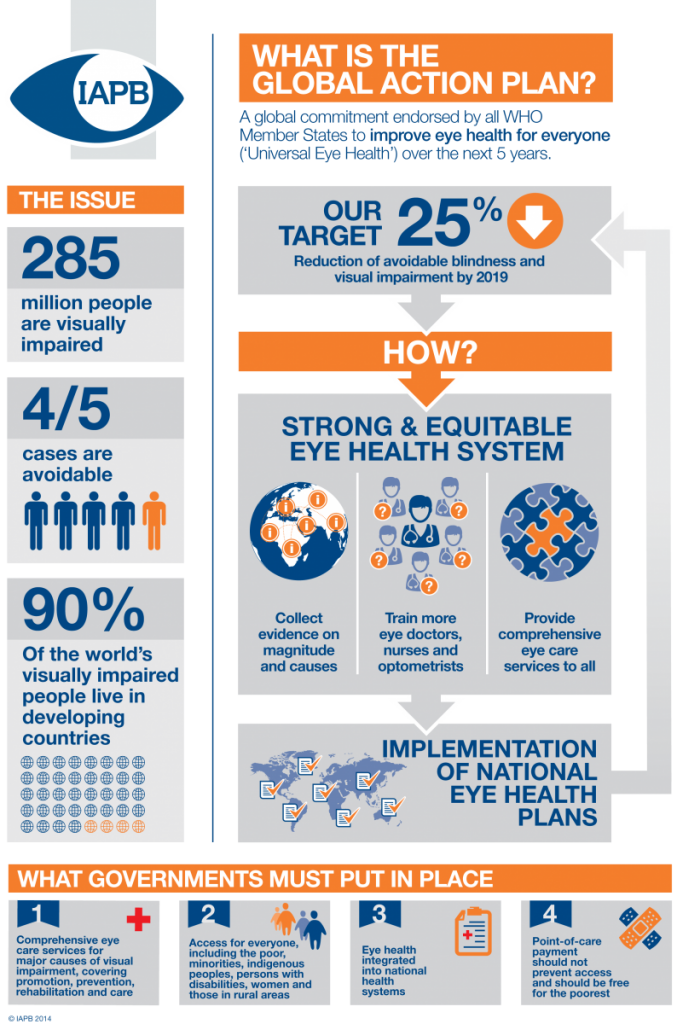In an effort to raise global awareness about vision impairment and blindness, the International Association for the Prevention of Blindness (IAPB) and the World Health Organization (WHO) have declared October 8 World Sight Day. In the third year of their theme “Universal Eye Care,” the focus is Eye Care for All.

Source: World Health Organization
The mandate for “eye care for all” is to educate and promote to the public that blindness and vision impairment are serious health issues that span the globe. Through the participation in World Sight Day (WSD), the hope is to engage government officials responsible for healthcare and to have them fund and participate in programs for national blindness prevention awareness.
Several points relating to educating the public about unnecessary vision loss internationally have been culled to help provide guidance for those participating in this year’s WSD:
- – Low vision or blindness affects roughly 285 million people across the globe.
- – While approximately 246 million suffer from moderate to severe vision loss, 39 million are blind.
- – Countries with low incomes hold 90 percent of the persons who are blind.
- – As many as 80 percent of people who have become blind could have had treatment or preventative measures.
- – Blindness prevention and sight restoration are some of the greatest savings in healthcare spending.
- – With education and intervention, blindness from infectious diseases has been greatly reduced.
- – There are roughly 19 million children who suffer from vision impairment globally.
- – While only 20 percent of the world’s population is over 50, this group suffers visual impairment at a rate of 65 percent.
- – As the over 50 age group increases world wide, age-related visual impairment is expected to grow.
As proponents of eye health, Optos would like to encourage you to participate in World Sight Day by reminding your patients to maintain a regular schedule for comprehensive eye exams including optomap®. With the ability to view up to 200 degrees of the retina and into the periphery, you are able to diagnose eye pathologies earlier than with other devices, contributing to greater success in preventable vision loss and blindness. View our ultra-widefield imaging devices and contact us to learn how we can help your practice.